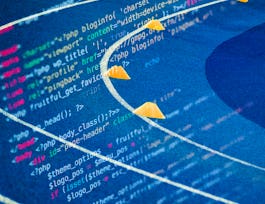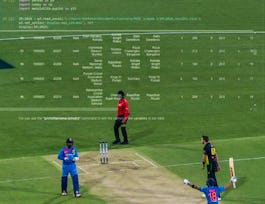The book Moneyball triggered a revolution in the analysis of performance statistics in professional sports, by showing that data analytics could be used to increase team winning percentage. This course shows how to program data using Python to test the claims that lie behind the Moneyball story, and to examine the evolution of Moneyball statistics since the book was published. The learner is led through the process of calculating baseball performance statistics from publicly available datasets. The course progresses from the analysis of on base percentage and slugging percentage to more advanced measures derived using the run expectancy matrix, such as wins above replacement (WAR). By the end of this course the learner will be able to use these statistics to conduct their own team and player analyses.


Moneyball and Beyond
This course is part of Sports Performance Analytics Specialization
Taught in English
Some content may not be translated

Instructor: Stefan Szymanski
3,285 already enrolled
Included with 
Course
(47 reviews)
Recommended experience
What you'll learn
Program data using Python to test the claims that lie behind the Moneyball story.
Use statistics to conduct your own team and player analyses.
Skills you'll gain
Details to know

Add to your LinkedIn profile
15 quizzes
Course
(47 reviews)
Recommended experience
See how employees at top companies are mastering in-demand skills

Build your subject-matter expertise
- Learn new concepts from industry experts
- Gain a foundational understanding of a subject or tool
- Develop job-relevant skills with hands-on projects
- Earn a shareable career certificate


Earn a career certificate
Add this credential to your LinkedIn profile, resume, or CV
Share it on social media and in your performance review

There are 5 modules in this course
In this module we introduce the Moneyball story and explore the method used to test that story. We begin the process of replicating the moneyball test by establishing the relationship between team winning and and two performance statistics - on base percentage (OBP) and slugging percentage (SLG).
What's included
5 videos10 readings3 quizzes2 ungraded labs
In this module we estimate the relationship between MLB player salaries and their performance statistics, OBP (on base percentage) and SLG (slugging). The results appear to confirm the Moneyball story - OBP was undervalued relative to SLG prior to the publication of Moneyball, while after publication the relative significance is reversed.
What's included
6 videos8 readings3 quizzes2 ungraded labs
This module updates the analysis of Hakes & Sauer and estimates the rewards to OBP and SLG over the period 1994 -2015. In addition it shows how rewards can be related to individual components of SLG: walks, singles, doubles, triples, and home runs.
What's included
6 videos9 readings3 quizzes2 ungraded labs
This module introduces the concept of run expectancy, shows how to derive the run expectancy matrix and the calculation of run values based on an MLB dataset of all events in the 2018 season. Run values are calculated by event type (walks, singles, doubles, etc.) and by player.
What's included
4 videos9 readings3 quizzes2 ungraded labs
This module examines the concept of Wins Above Replacement (WAR) and shows how to calculate WAR based on batting performance. The relationship between play run values team win percentage and player salaries is then explored. Run values are shown to have a high degree of correlation with winning and with salaries. Run values can to a limited extent predict win percentage.
What's included
4 videos9 readings3 quizzes2 ungraded labs
Instructor

Offered by
Recommended if you're interested in Data Analysis

University of Michigan

University of Michigan

University of Michigan

University of Michigan
Why people choose Coursera for their career




Learner reviews
Showing 3 of 47
47 reviews
- 5 stars
72.34%
- 4 stars
23.40%
- 3 stars
0%
- 2 stars
0%
- 1 star
4.25%
New to Data Analysis? Start here.

Open new doors with Coursera Plus
Unlimited access to 7,000+ world-class courses, hands-on projects, and job-ready certificate programs - all included in your subscription
Advance your career with an online degree
Earn a degree from world-class universities - 100% online
Join over 3,400 global companies that choose Coursera for Business
Upskill your employees to excel in the digital economy
Frequently asked questions
Access to lectures and assignments depends on your type of enrollment. If you take a course in audit mode, you will be able to see most course materials for free. To access graded assignments and to earn a Certificate, you will need to purchase the Certificate experience, during or after your audit. If you don't see the audit option:
The course may not offer an audit option. You can try a Free Trial instead, or apply for Financial Aid.
The course may offer 'Full Course, No Certificate' instead. This option lets you see all course materials, submit required assessments, and get a final grade. This also means that you will not be able to purchase a Certificate experience.
When you enroll in the course, you get access to all of the courses in the Specialization, and you earn a certificate when you complete the work. Your electronic Certificate will be added to your Accomplishments page - from there, you can print your Certificate or add it to your LinkedIn profile. If you only want to read and view the course content, you can audit the course for free.
If you subscribed, you get a 7-day free trial during which you can cancel at no penalty. After that, we don’t give refunds, but you can cancel your subscription at any time. See our full refund policy.

